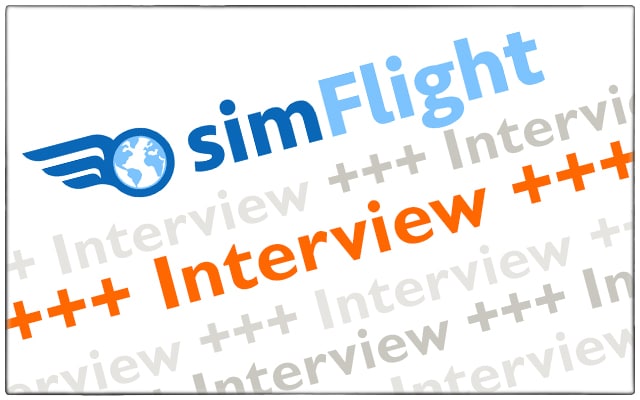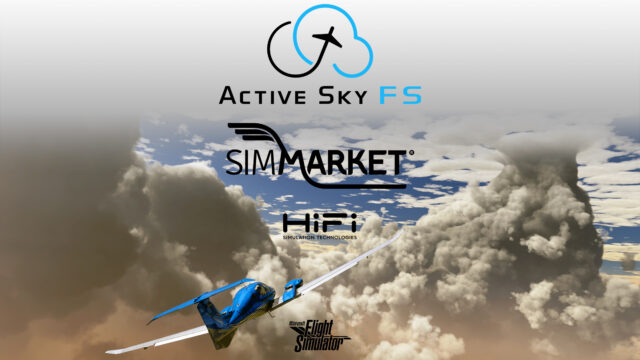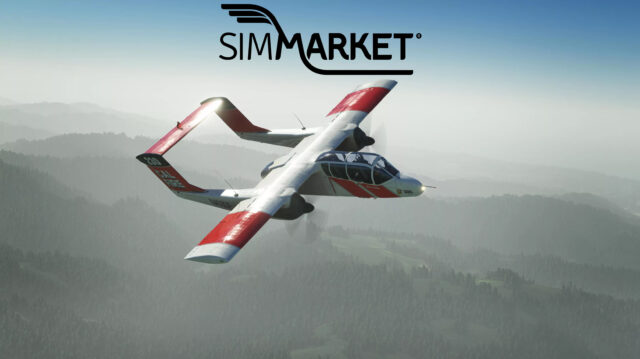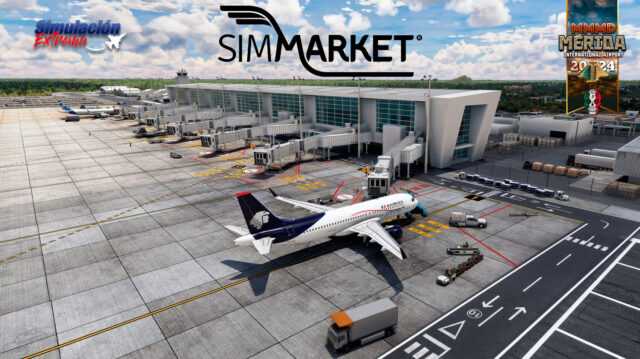The Bombardier Canadair Regional Jet 550/700 – CRJ for short – from Aerosoft will be available for purchase for Microsoft Flight Simulator 2020 in a few days. We didn’t miss the chance to ask the responsible project manager Mathijs Kok from Aerosoft a few questions about the CRJ and its development.


What was the reason for the decision to start with the CRJ as the “first complex aircraft” from Aerosoft in the MSFS? Why not with the Airbuses and when can we look forward to that?
While still pretty complex and for sure the most complex add-on for MFS to date, a CRJ is a less complex aircraft than a A320. The code was also better suited for the conversion. Last but not least, the main coder is Hans Hartmann, and he is very good at these kind or transitions. He has decades of experience.
I’m sure you’ve done some virtual flying in P3D and also MSFS. How is the flight experience different, especially with the CRJ? What is noticeably different in terms of the flight model?
A bit of a personal impression this, but I find the whole experience more ‘natural’ less predictable. While having no experience with airliners my own comparison between flying a small aircraft in P3D and MFS is absolutely in favor of MFS. Certainly, when the flight model is done by an expert like Alexander Metzger. He has worked a lot with our friends at Asobo.
What is the difference in development between MSFS and P3D? Was it a big change?
Yes and no. In coding (so the systems) there is not a huge difference, it is just that you need to talk to different interfaces, use different variables. A different platform but the complexity is roughly the same. In flight models I think more or less the same can be said, different options, different problems, different new opportunities but not hugely more complex. In modeling, texturing and animations things are VERY different, we jumped from 1990 standards to fully modern games modeling.
The MSFS airliners are very unstable around the longitudinal axis and have unrealistic excess thrust. Have you fixed this on the CRJ?
The inertia around all axes is adapted to the real flight behavior of the CRJ and fly very comfortable with the default settings of the MSFS – sensitivity to – 30%.
The MSFS jets have a hard time taxiing on the ground (very large turning radius) is this implemented better on the CRJ?
The steering corresponds approximately to the real behavior of the CRJ, so that one can can roll away very well even from tight parking positions. There is no tiller function in the MSFS, so we have to make all steering movements with the pedals. Therefore, it is recommended to set the sensitivity curve to -50 so that when taxiing and accelerating on the runway, the response to rudder input is somewhat smoother.

Is the autopilot of the AS CRJ revised or how far is it based on the MSFS
standard autopilot? Is VNAV, D-TO etc. well implemented?
The autopilot is mostly self-developed, but for some functions it uses the standard autopilot, which already offers very good implementations, e.g. of heading hold. VNAV and D-TO have nothing to do with the autopilot, but belong to the FMS but both are implemented. In the case of the VNAV, either as Advisory VNAV, as it is available in the vast majority of aircraft, or as Coupled VNAV (in the CRJ- 1000 or as a customer option for other models), which at least semiautomatically semi-automatically a vertical profile.
How extensive is the MCDU? Can you create your own waypoints and insert VOR distance circles? Is there a takeoff performance calculation (also with calculation of a shortened runway)?
The MCDU is complete except for a few functions. This includes custom waypoints and VOR distance circles. A takeoff performance calculation is available, including calculations for contaminated runway (wet or snow). Data for short field takeoff is not available yet.
You had posted great preview pictures with a lot of details, I remember there are detailed pictures of screws and pitot tubes. Doesn’t such a detailed model dramatically on the frames? How did you find a good balance?
No, the modern graphics options (most of all the use of ‘decals’) make it possible to make text a few mm high readable without having to do the whole aircraft in crazy resolution. In fact, the base aircraft has a 2k texture and that is more than enough. So, the overall texture load is similar to the same aircraft in P3D while looking way better. The graphics engine itself is also damned fast and can handle a lot of polygons.

With the step to publish a kind of tutorial via a YouTube streamer (The Dude) in advance, Aerosoft has taken a new, courageous path. The many clicks and reactions seem to prove you right. How did this come about and will this also be available for future products?
Well actually that is a very good question. See, in the last few years almost all add-on builders were making add-ons for X-Plane and P3D. Now those users are almost all pretty hard-core simmers who have a lot of experience.
But MFS is a whole different simulator in that aspect. Microsoft told us all, many, many months ago that MFS was installed on 1.2 million systems, I am assuming it is a lot more now. Now just speaking about P3D we estimate (and that is really a wild guess) that we were aiming for 30.000 potential customers. All customers that are willing to invest in the hobby, but still, the numbers are very different.
So clearly, we would be dealing with a lot of customers who had very little experience. Thus, we decided that we would not only need to sell them the aircraft, but also the knowledge to fly it, part of the product. So, we have many manuals, there will be many videos, but at the heart of it all is the tutorial. In written form and what TheDude does in video. We will also have two people with little experience video the way they handle the tutorials btw. We also have many forum sections prepared, many friends who will help us.
And we certainly are planning to do something similar for our other aircraft releases now we seen how the potential users think about these guides.
Will there be a virtual co-pilot?
No, not planned for this edition.
What’s actually going on after the release in terms of the CRJ? Do you like to spoil? 🙂
Our release plan is to implement the CRJ 900 and 1000 quite soon, after which we will first focus on the Twin Otter. Of course, as soon as the simulator offers new options, we will incorporate them as soon as possible. At the same time, we have a full development team working on our Airbuses.
Many thanks to Mathijs Kok and Vanessa Quandt for this interview!









![[Video🎬] New Trailer 4K for Turkish Airports MSFS by SceneryTR Design – Istanbul – Ankara Trabzon by SIMMARKET](https://www.simflight.com/wp-content/uploads/2024/04/SceneryTR_thumb.jpg)
[…] de Aerosoft Mathijs Kok y le hemos hecho algunas preguntas sobre el CRJ; puedes ver la entrevista aquí (en […]
[…] De Big Bird…. uiteraard wordt hier de Bombardier Canadair Regional Jet 550/700, afgekort ook wel de CRJ mee bedoeld. Een interview met Mathijs Kok van Aerosoft kunt u lezen via de Engelse simFlight website. Een CRJ voor in MSFS. U kunt het interview hier lezen. […]